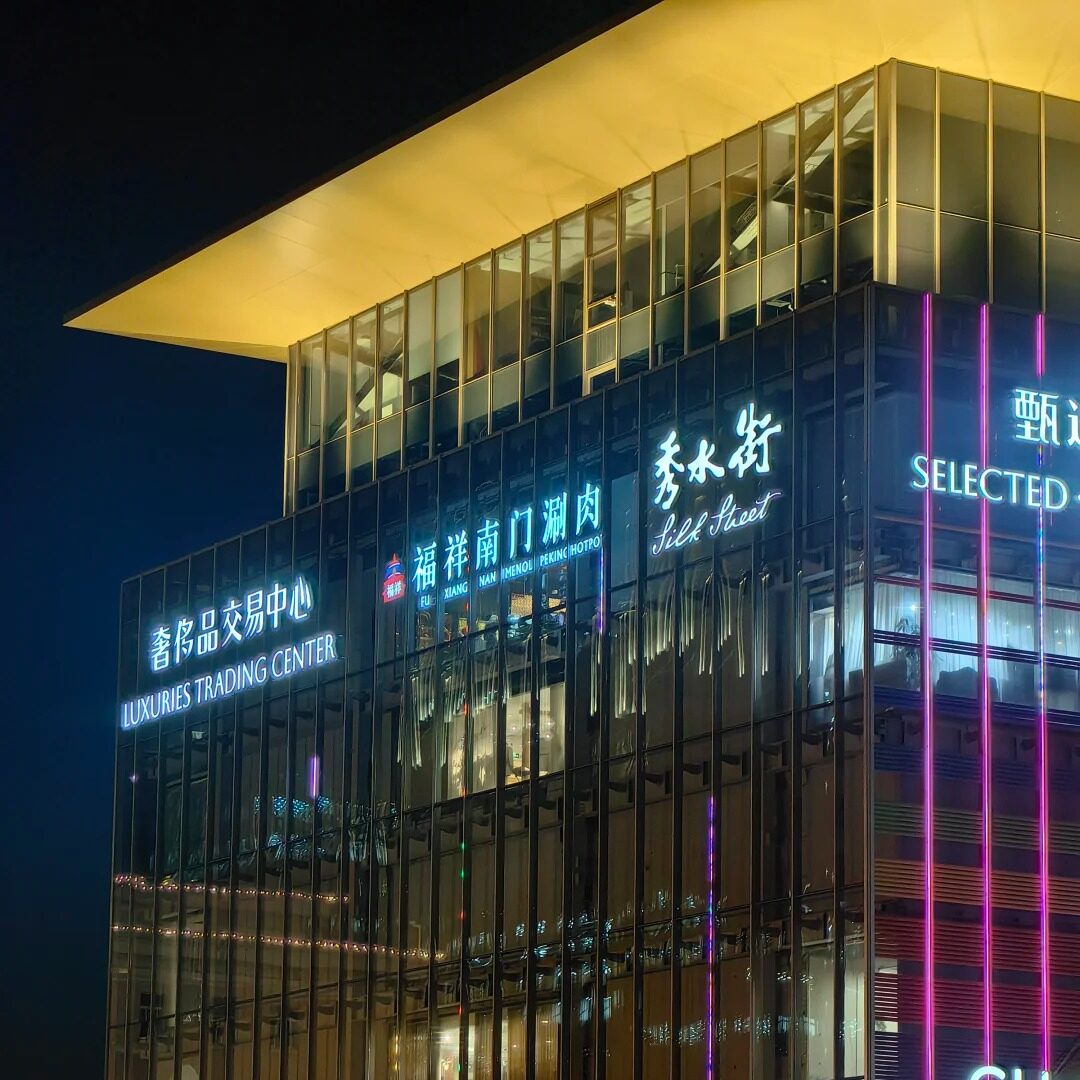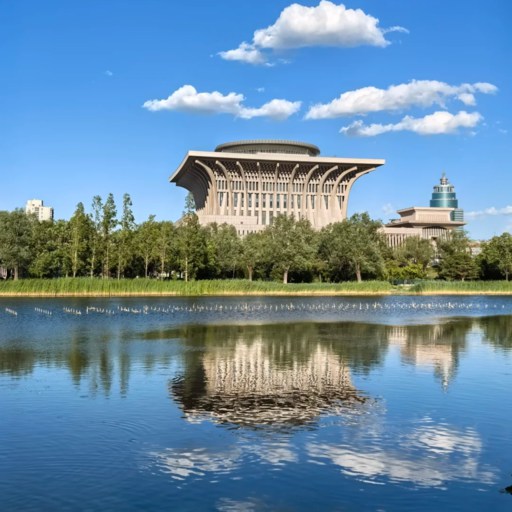Beijing offers a unique blend of ancient history and vibrant modern life. If you want to discover top Beijing tourist attractions, this city won’t disappoint. Explore the majestic Forbidden City, stroll through Tiananmen Square, and experience the awe of the Great Wall nearby. These iconic sites show China’s rich culture and history in a way no other place can. Whether you’re visiting Beijing for the first time or returning, these Beijing tourist attractions promise unforgettable memories. Ready to dive into the heart of China’s capital?
What Are the Most Iconic Historical Sites in Beijing?
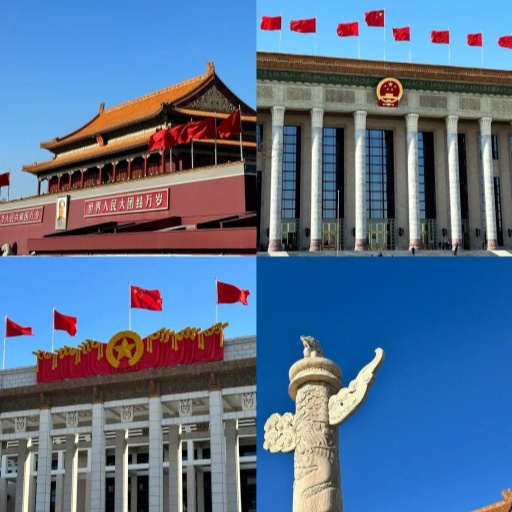
Tiananmen Square
The Forbidden City: Beijing’s Timeless Imperial Treasure
Step into a world of ancient grandeur at the Forbidden City, located right in the heart of Beijing. This majestic complex, once the residence of 24 emperors, is now one of the city's most renowned tourist destinations. As you pass through its imposing red gates, you’ll discover over 180 acres and more than 8,000 rooms, each whispering tales from China’s imperial past. Visitors are captivated by its flawless symmetry, shimmering golden roofs, and intricately carved dragons. The Hall of Supreme Harmony, for example, is truly awe-inspiring, with every detail echoing the immense power of bygone dynasties.
To ensure a smooth visit to the Forbidden City, a bit of planning goes a long way. Remember, tickets must be booked online in advance, and your passport is required for entry. Aim for an early morning arrival to avoid peak crowds and capture the soft, beautiful light. Given the extensive walking involved, comfortable shoes are an absolute must. A smart path to take is entering through the south gate and exiting via the north, allowing you to experience the most iconic areas efficiently. For those seeking deeper understanding, consider hiring a professional guide or utilizing the official audio tour.
Don't rush off after exploring the palace grounds; directly outside lies Jingshan Park. This park offers a breathtaking panoramic view of the Forbidden City from above, providing a fantastic photo opportunity and a peaceful spot to unwind. More than just a historical landmark, the Forbidden City is a remarkable time capsule. Among all of Beijing's attractions, it uniquely embodies China’s imperial spirit. Whether you're a history buff or an admirer of architecture, this site deserves a top spot on your itinerary.
Can’t choose between imperial Beijing and futuristic Shanghai? Find your answer in Beijing vs Shanghai Essentials: Ancient Majesty or Neon Dreams for Short Trips?.
Tiananmen Square: Center of Modern Chinese History
Tiananmen Square sits just south of the Forbidden City. It is one of the largest public squares in the world. Millions visit this spot every year. It is a key symbol among Beijing tourist attractions. The square has witnessed many historic events. It hosts the daily flag-raising ceremony at sunrise, which attracts crowds. Visitors often come early to watch this patriotic moment. Surrounding the square, you can find important landmarks like the Great Hall of the People and the National Museum of China. These institutions showcase China’s political and cultural history.
Besides history, Tiananmen Square offers a lot to explore. You can visit the Mausoleum of Mao Zedong where his embalmed body lies in state. It’s a solemn place that many tourists find moving. Security checks are strict, so be prepared for lines. On the east side, the National Museum holds extensive exhibits about China’s past and present. It is free to enter, but you must reserve tickets online. The square itself is an open space, ideal for walking and photography. At night, the lighting creates a beautiful scene with the Tiananmen Gate Tower looming in the background.
To make the most of your visit, plan ahead. The best time is early morning or late afternoon to avoid crowds and harsh midday sun. Combine this stop with a visit to the Forbidden City, which is just north. Both sites together tell the story of China’s imperial and modern eras. As one of the top Beijing tourist attractions, Tiananmen Square is a must-see landmark. It connects history, culture, and public life in a unique way.
The Great Wall: A Monumental Wonder Beyond the City
Venture beyond the city limits to experience the Great Wall, the most iconic symbol of China known across the globe. This ancient defense system, sprawling for thousands of miles across northern China, was constructed over centuries to protect the Chinese empire from invasions. Today, the Great Wall remains a pinnacle among Beijing's tourist attractions, drawing visitors from all corners of the world to hike its rugged sections. Winding through mountains, it offers breathtaking vistas, and each section possesses its own distinct character, varying in ease of access and challenge.
Choosing the right section to visit is an important decision. Badaling is the most frequented and developed, featuring cable cars and extensive tourist facilities, making it an excellent choice for first-timers. Mutianyu offers a less crowded experience with stunning scenery and beautifully restored watchtowers. For avid hikers seeking a more natural and challenging adventure, Jinshanling is an ideal option. Regardless of which section you select, prepare for physical activity, as the steps can be steep and uneven. Comfortable shoes, plenty of water, and sun protection are indispensable. While visiting the Great Wall is a full-day commitment from Beijing, the experience is undoubtedly worth every minute.
Beyond the physical trek, the Great Wall holds immense cultural significance, symbolizing strength, perseverance, and Chinese ingenuity. Many travelers consider it the undisputed highlight of their Beijing journey. You might also consider combining your visit with a local lunch or tea in nearby villages to gain a deeper appreciation for rural life. The Great Wall is not merely a monument; it’s a living connection to China’s rich past and an essential addition to any traveler's list of must-see Beijing attractions.
Where Can You Discover Traditional Beijing Life and Culture?
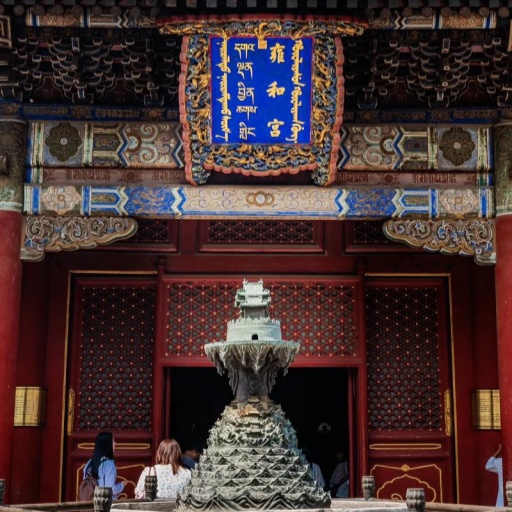
Lama Temple
Beijing Hutongs: A Journey Through Time
Tucked away behind Beijing’s modern skyline, the city’s ancient hutongs offer a rare glimpse into traditional Chinese life. Walk through atmospheric alleys like Nanluoguxiang or Yandai Xiejie, where red lanterns swing gently above stone-paved paths. These narrow lanes are among the most memorable Beijing tourist attractions—alive with stories and steeped in culture.
On foot or by bike, exploring the hutongs lets you slow down and experience the rhythm of local life. You'll pass weathered brick walls, hidden courtyards, and neighbors chatting over tea. Join a guided tour to learn the history behind the siheyuan architecture, or simply wander and soak up the everyday charm that contrasts so vividly with the rest of the city.
Don’t leave without sampling a jianbing or a handful of roasted chestnuts from a street cart. Early mornings and late afternoons bring soft light and fewer crowds—perfect for photography. These historic neighborhoods are more than just alleys; they are a living part of Beijing’s soul and a must for any curious traveler.
Lama Temple: Spiritual Calm in the Heart of the City
The Lama Temple, or Yonghe Temple, is one of Beijing’s most famous Buddhist sites. It combines Han Chinese and Tibetan architectural styles. This temple attracts many visitors interested in religion and culture. As a peaceful retreat, it contrasts with the city’s hustle. Among top Beijing tourist attractions, the Lama Temple offers spiritual calm. Inside, you’ll find ornate halls, colorful statues, and intricate wood carvings. The Great Buddha Hall houses a huge Maitreya Buddha statue carved from a single sandalwood tree.
Visiting the Lama Temple gives a glimpse into Tibetan Buddhism’s influence in Beijing. Monks perform rituals and prayers, adding to the temple’s atmosphere. The temple hosts traditional festivals, which showcase lively ceremonies and music. For travelers, this is an opportunity to learn about Chinese spirituality. It also offers a quiet space for reflection. Many people light incense and make offerings as part of their visit.
To enjoy the temple fully, visit early in the morning or late afternoon. Weekdays are less crowded. Photography is allowed, but respectful behavior is required. The Lama Temple is easy to reach by subway or taxi. It stands as a cultural highlight in Beijing, blending history, art, and religion. Don’t miss this serene spot while exploring Beijing tourist attractions.
Beijing Opera: A Performance of Color and Character
Beijing Opera is a traditional Chinese art form combining music, singing, and acting. It has deep roots in Beijing culture and history. As one of the unique Beijing tourist attractions, it offers a spectacular experience. The performances feature colorful costumes, elaborate face paint, and dramatic movements. Every character’s face design has symbolic meaning. The opera tells stories from Chinese folklore, history, and myths. Watching it live brings ancient tales vividly to life.
You can see Beijing Opera shows at theaters like the Liyuan Theatre and Chang’an Grand Theatre. Some performances include English subtitles, helping international visitors follow the story. Tickets vary in price but booking in advance is recommended. The shows usually last one to two hours, ideal for an evening activity. Performances combine singing with martial arts and acrobatics, creating dynamic entertainment.
To appreciate Beijing Opera fully, learn a bit about its styles and symbols beforehand. This enhances your understanding of the stories and characters. The opera reflects Chinese values and traditions. It’s a cultural treasure, highly praised among Beijing tourist attractions. Whether you’re a fan of theater or new to Chinese culture, don’t miss this vibrant art form.
What Natural and Garden Attractions Should You Visit in Beijing?
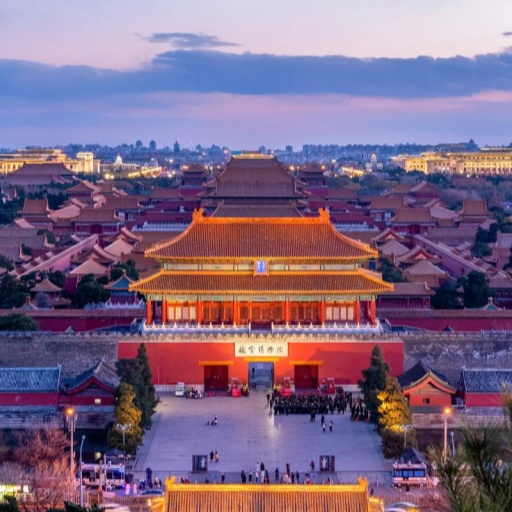
View the Forbidden City from Jingshan Park
Summer Palace: Royal Gardens by the Lake
The Summer Palace is one of the most stunning Beijing tourist attractions. This former imperial retreat offers a peaceful break from the city. Kunming Lake is the heart of the park. Renting a boat here is a must. You’ll enjoy the breeze and views of distant pavilions and bridges. It’s also one of the best spots to take in the park’s beauty from the water.
Another highlight is the Long Corridor. It stretches for over 700 meters, covered in colorful paintings. Strolling along this shaded walkway, you’ll pass by gardens, ancient trees, and lake views. It’s great for both sunny and rainy days. Make sure to stop and admire the artwork—it tells stories from Chinese legends and history.
Don’t miss the distant view of the Tower of Buddhist Incense. Climbing up close is rewarding, but even from the lake or bridge, it’s a breathtaking sight. You’ll feel like you’ve stepped into a painting. The view of the tower rising above the trees is iconic.
Spring and autumn are the best times to visit. In spring, flowers bloom and the park feels alive. In autumn, the trees turn golden and the skies are clear. Summer can be crowded but is great for boating. Winter offers frozen lake views and fewer people, though it can be cold.
The Summer Palace combines nature, history, and royal elegance. Whether you’re into boating, strolling, or photography, it’s a can’t-miss among the best places to visit in Beijing. Take your time and enjoy the calm that emperors once did.
Jingshan Park: The Best View of the Forbidden City
If you’re searching for a panoramic view of Beijing, Jingshan Park is unbeatable. Located just north of the Forbidden City, this hilltop park gives you the perfect bird’s-eye view of the ancient palace. It’s one of the top Beijing tourist attractions for photography lovers and anyone who enjoys scenic lookouts.
Climb to the top of the central hill, and you’ll find the Wanchun Pavilion. From here, the entire Forbidden City stretches out before you, its golden roofs shining under the sky. Behind you, you’ll see the modern cityscape, creating a powerful contrast between past and present.
Visiting at sunrise or sunset adds extra magic. Early in the morning, the soft light hits the palace rooftops and paints the sky in pinks and oranges. At sunset, the city glows as lights start to twinkle. Bring a camera or smartphone—you’ll want to capture this moment.
While the main draw is the view, the park itself is lovely too. Ancient trees line the paths, and locals gather to sing, dance, or play traditional instruments. It’s a great spot to see daily Beijing life in a calm setting. After your climb, relax on a bench and soak it all in.
Jingshan Park is small compared to other parks, but it offers one of the most rewarding experiences. It’s perfect to combine with a visit to the Forbidden City. The short walk over is easy, and the payoff is huge. For a peaceful, inspiring, and photogenic break, this is one of the must-see places in Beijing.
Beihai Park: Imperial Peace by the Water
Beihai Park offers a relaxing escape right in central Beijing. Once an imperial garden, it’s now one of the most beautiful public parks in the city. Its peaceful lake, ancient structures, and seasonal beauty make it a top Beijing tourist attraction.
The most iconic landmark here is the White Dagoba, sitting high on Jade Flower Island. This Tibetan-style stupa was built in the 17th century and has become a symbol of peace. It stands out against the sky and reflects beautifully in the lake below. Climbing the hill offers lovely views in all directions.
Boating is popular here too. You can rent paddle boats or electric ones and glide around the lake. It’s especially pleasant in spring and autumn when the weather is mild. In spring, willows line the shore and flowers bloom. Autumn brings crisp air and golden colors. The reflections in the water are simply stunning.
Beihai is more than a park—it’s a piece of Beijing’s imperial past. You’ll see pavilions, bridges, and courtyards used by emperors. Some areas even host cultural performances or tea ceremonies. It’s a great way to experience traditional Chinese garden design and lifestyle.
The park is perfect for a slow-paced visit. Come in the morning to watch locals doing tai chi or painting with water on the pavement. Visit in the evening for sunset views and soft music by the lake. No matter when you go, Beihai Park offers peace and beauty in the middle of a busy city.
For nature lovers, history fans, and casual walkers, this park is one of the best places to visit in Beijing. It’s quiet, scenic, and full of stories waiting to be discovered.
How to Plan a One-Day Trip to the Great Wall?

Mutianyu Great Wall
Choosing the Best Section of the Great Wall for a Day Trip
The Great Wall offers many sections near Beijing for day trips. Each has unique features and difficulty levels. Badaling is the most popular, with easy access and good facilities. It suits families and casual travelers. Mutianyu is less crowded and surrounded by beautiful scenery. It also has cable cars, making it easier to reach the wall’s top. Jinshanling offers a more rugged, hiking-focused experience for adventurers. Knowing your fitness level helps you pick the right section.
Transportation is a key factor in your choice. Badaling is about 70 kilometers from Beijing and well connected by public bus and train. Mutianyu is slightly farther but offers shuttle buses from nearby parking lots. Jinshanling requires more time to get to but rewards visitors with less tourist traffic. Some companies offer private tours with comfortable transport included. Booking in advance ensures a smooth trip, especially during peak seasons.
Besides distance and crowds, consider what kind of experience you want. If you want photo opportunities and easy walking, choose Badaling or Mutianyu. For a challenging hike and authentic wall experience, Jinshanling is best. Each section tells a part of the Great Wall’s story. Whichever you choose, the Great Wall is a top must-see among Beijing tourist attractions. Planning carefully will make your Great Wall of China Day Trip unforgettable.
How to Make the Most of Your Great Wall Experience
The Great Wall is not just a hike; it’s a journey through history. Take your time to enjoy the views and the ancient architecture. Stop at watchtowers to learn about their defensive roles. Read informational signs or listen to audio guides for context. Engage with local vendors for souvenirs or snacks. Respect the environment by not climbing on fragile sections or littering.
Combine your visit with nearby cultural experiences. Some tours include a stop at a traditional village or local restaurant. This lets you taste authentic Chinese food and meet locals. Taking photos during golden hour, either early morning or late afternoon, captures the wall’s beauty. Share your experience on social media to inspire others.
Finally, reflect on the Great Wall’s significance. It symbolizes China’s strength and unity. For many travelers, visiting it tops their list of Beijing tourist attractions. Proper planning and respect make your day trip memorable and meaningful. You’ll return with stories and photos to treasure forever.
What Should You Avoid When Visiting Beijing?

Beijing Subway Map
Avoid Beijing’s Traffic and Travel Delays
Beijing is a huge city with heavy traffic, especially during rush hours. Travelers often underestimate travel time between attractions. This mistake wastes precious sightseeing hours. To avoid delays, use public transit like the subway. The subway network covers most Beijing tourist attractions. It’s fast, affordable, and avoids traffic jams. Alternatively, ride-hailing apps like DiDi provide convenient taxi service.
Planning your itinerary carefully helps avoid frustration. Limit your daily stops to nearby sites. For example, visit the Forbidden City and Tiananmen Square on the same day. Avoid peak traffic times, typically 7-9 a.m. and 5-7 p.m. Also, book tickets online when possible. This cuts waiting lines at popular attractions. Taking these steps improves your travel experience in Beijing.
Avoid Scams and Tourist Traps
Scams and tourist traps sometimes target visitors in Beijing. One common trick involves unofficial taxi drivers overcharging fares. To avoid this, use licensed taxis or reliable ride apps like DiDi. Always agree on the price beforehand or insist on the meter. Be cautious buying souvenirs near major tourist attractions. Some vendors inflate prices or sell fake goods.
Beware of street vendors pushing expensive tours or services. Politely decline if unsure or uncomfortable. If you want to book tours, use reputable agencies or your hotel’s concierge. Research prices beforehand to spot unreasonable offers. Avoid giving money to overly persistent solicitors.
Lastly, watch your belongings carefully in crowded areas. Pickpocketing can occur in busy tourist spots and subway stations. Keep valuables secure and stay alert. Taking these precautions helps you avoid common tourist pitfalls. This ensures a safer, smoother experience visiting Beijing’s famous sites.
Wangfujing Snack Street Often Disappoints Food Lovers
Wangfujing Snack Street is famous among Beijing tourist attractions for its variety of street food. Many visitors expect unique local flavors here. However, the experience can be underwhelming. The street offers unusual snacks, such as insects on sticks, which seem more like a show for tourists than real food locals enjoy. Photography restrictions around these snacks add to the strange vibe.
We tried skipping the insect options and ordered from several vendors. Sadly, the food was mostly tasteless, overpriced, and lacked freshness. For those seeking authentic Beijing cuisine, this spot often disappoints. Instead of savoring genuine flavors, visitors get a commercialized and artificial food experience. This leaves a gap between expectations and reality.
If you want to truly enjoy Beijing’s culinary scene near popular tourist attractions, avoid the snack street. Head to small local eateries in the Hutongs instead. There, you can find delicious, traditional dishes at reasonable prices. These hidden gems offer a far better chance to taste authentic Beijing food and create memorable dining moments.
Reference
Frequently Asked Questions (FAQs)
Q: Why is Beijing called Forbidden City?
A:Interestingly, the Forbidden City refers to the imperial palace. Emperors once lived here and ruled China. The name means ordinary people were forbidden from entering. Guards patrolled the gates, keeping it private. Only royal family members moved freely inside. The massive complex sits in central Beijing, near other iconic spots. Many visit it when exploring Beijing tourist attractions. Its design reflects traditional Chinese architecture and culture. Moreover, visitors enjoy its golden roofs and red walls. Inside, exhibitions showcase ancient royal lifestyles. Photography lovers admire the grand courtyards. Today, it’s part of the Palace Museum. Tourists can enter freely or take guided tours. Guides offer rich historical context. Among Beijing tourist attractions, this ranks top. Therefore, the name reflects its royal, restricted past. Now it welcomes millions every year.
Q: Can I visit Beijing tourist attractions like the Forbidden City without a guide?
A:Yes, you can visit Beijing tourist attractions without a guide. Most attractions provide English signs and maps. Online audio tours are available for download. Museums usually have mobile apps with guides. Also, maps at entrances offer helpful overviews. However, a guide gives deeper cultural context. Some travelers prefer structured explanations. Still, many enjoy exploring freely at their pace. Places like the Forbidden City are easy to navigate. You'll find labeled displays and info boards. Moreover, locals are often happy to assist visitors. Beijing tourist attractions are designed for self-guided visits. So, while guides help, they're not required. You can create your own itinerary. Just research opening hours and ticket policies. Pre-booking tickets is highly recommended. Especially during holidays, crowds can get intense. With or without a guide, you'll enjoy the experience. Beijing tourist attractions are fascinating and rich in history.
Q: Can I buy combined tickets for multiple Beijing tourist attractions?
A:Absolutely, many sites offer combined ticket options. Tourists save money and time. For example, the Forbidden City and Jingshan Park. These are often paired in package deals. Summer Palace and nearby boat tours, too. Some combo tickets include museums and historic temples. Online travel platforms sell discounted bundles. Additionally, tourist cards cover major Beijing tourist attractions. You can use mobile apps to buy passes. City tourist centers also provide ticket packages. These combos are popular among foreign visitors. They offer convenience and budget-friendly deals. Beijing tourist attractions work together to promote tourism. Always check official websites for valid offers. Read fine print for date limitations. Some passes are non-refundable once activated. Still, these deals enhance sightseeing flexibility. Choose based on your interest and schedule. Whether solo or family, combo tickets are useful. Beijing tourist attractions become more accessible this way.
Q: What do tourists typically do when visiting Beijing?
A:Typically, tourists explore famous Beijing tourist attractions first. The Forbidden City tops most itineraries. Then comes the Great Wall near Beijing. Many also visit the Temple of Heaven. Summer Palace and Lama Temple are favorites. Walking tours around old hutongs are popular. Tourists try Peking duck and local dishes. Shopping at Silk Market is common. Night markets offer souvenirs and street food. Art lovers explore 798 Art Zone. Beijing’s parks attract families and seniors. Olympic Park draws sports fans and photographers. Tourists also attend Peking Opera shows. They enjoy tea houses and cultural performances. Biking around Houhai lakes is relaxing. Museums give insight into China's vast history. Public transport makes it easy to get around. With so much to do, planning helps. Beijing tourist attractions suit all interests and ages. So visitors always find something exciting in Beijing.
Q: How do people travel around Beijing, China?
A:Usually, travelers use the subway in Beijing. It’s fast, cheap, and easy. Subway signs are in English and Chinese. Major Beijing tourist attractions connect by subway lines. Trains come every few minutes. Subway maps help plan your route. Buses also serve many tourist areas. But they’re slower and often crowded. Taxis are available but cost more. Ride-hailing apps like DiDi are reliable. Many tourists also walk between close sites. Bikes and scooters are great for short rides. Hotels often offer travel tips. Airport express trains are convenient for arrivals. High-speed rail links Beijing to other cities. Tourists also book private car tours. That’s helpful for the Great Wall trip. Apps like Baidu Maps show transport routes. Always carry a subway card or change. Beijing tourist attractions are easy to reach. Overall, transportation in Beijing is simple and reliable.
Q: Are there any Beijing tourist attractions that are free to visit?
A:Yes, several Beijing tourist attractions are free to enter. For example, Tiananmen Square charges nothing. You can walk around and take photos freely. Nearby, the National Museum offers free entry. Just bring your passport to register. Parks like Olympic Forest Park are also free. Local hutongs welcome curious travelers. Many temples allow free outdoor visits. Cultural streets like Nanluoguxiang cost nothing. Government events sometimes open historic sites. Beijing’s university campuses are also scenic spots. You can enjoy traditional architecture and gardens. Free walking tours are available online. Just download a route and start walking. Public art in 798 Art Zone is viewable. Museums occasionally offer free days. Check their websites for schedules. Free attractions offer insight into local culture. They’re great for budget-conscious travelers. So yes, you can enjoy Beijing tourist attractions without spending much.
Q: What’s the best time of year to visit Beijing tourist attractions?
A:Ideally, visit Beijing in spring or fall. March to May is warm and dry. Flowers bloom and skies stay clear. Autumn, from September to November, is perfect too. Leaves turn golden in Beijing’s parks. The weather feels cool and pleasant. Summer gets hot and crowded. Many domestic tourists come in July and August. Winter is cold but less busy. Snow sometimes covers Beijing tourist attractions. That creates beautiful photo opportunities. However, cold wind may be uncomfortable. Plan based on your interests and tolerance. Spring suits sightseeing and outdoor walks. Fall offers crisp air and great views. Wear layers for changing weather. Festivals like Mid-Autumn add cultural value. Avoid national holidays to skip big crowds. Book early for peak seasons. Beijing tourist attractions shine in all seasons. But spring and fall offer the best balance.

